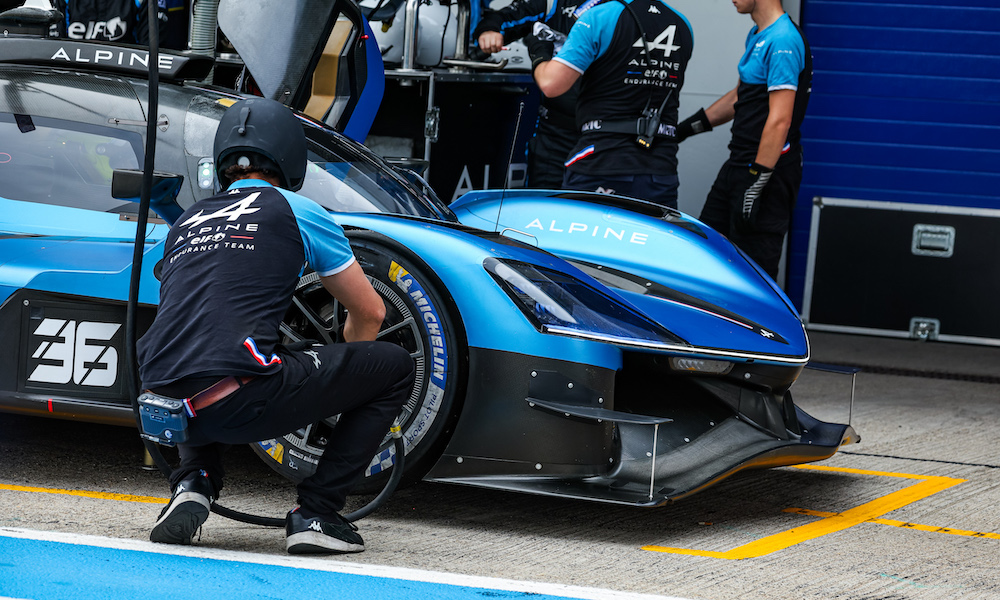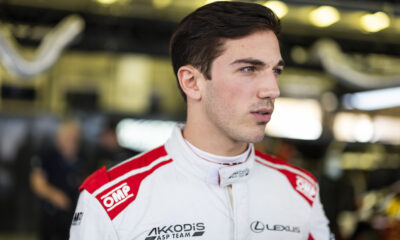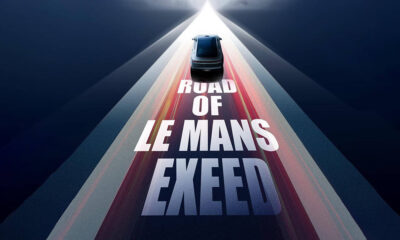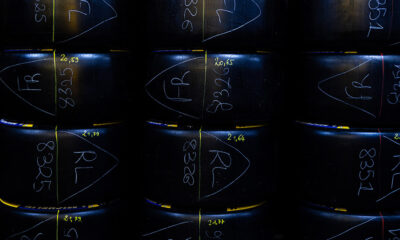
Photo: Florent Gooden/DPPI
Alpine is gearing up for a lengthy and complicated process to get its A424 homologated ahead of its 2024 FIA World Endurance Championship debut, facing unique challenges as the first manufacturer to exclusively race a LMDh car outside of the U.S.
The French manufacturer is aiming to debut its car during the opening round of the WEC, the Qatar 1812km, in March. To do so, however, it is facing a set of circumstances unlike those of its LMDh counterparts.
This stems from the fact that Alpine is the first and only manufacturer to build an LMDh car with the initial goal of competing exclusively in WEC.
While Acura has so far solely focused on the IMSA WeatherTech SportsCar Championship, Cadillac and Porsche are competing in both while BMW is preparing to add a WEC effort with Team WRT to its existing U.S.-based program with Team RLL.
Lamborghini, which is also set to debut a brand new LMDh car in 2024, will do so with the goal of a combined WEC-Michelin Endurance Cup effort next year.
However, as Alpine’s chief LMDh engineer Yann Paranthoen explained, the brand will still be required to send a car to the Windshear wind tunnel in North Carolina as part of its homologation process that will also see the car go to the Sauber facility in Switzerland to meet WEC’s criteria.
As previously indicated by IMSA president John Doonan, any LMDh car, regardless of whether or not the manufacturer involved has an intention to race in IMSA, is required to go through Windshear in order to be homologated.
“We have to go because it’s IMSA and ACO homologation,” Paranthoen told Sportscar365.
“So week 46 in Windshear for IMSA homologation because LMDh and week 50 we go back to Europe in Sauber to do the ACO/FIA homologation. It’s a very long process.”
Paranthoen indicated that Alpine has not allocated separate chassis for both sides of the homologation process, instead transporting a single A424 from North Carolina to Switzerland.
“It’s the same car,” he said “We have one car in the U.S. so far. So end of week 46 (mid-November) we finish Windshear and we go back to Europe with the same car.
“We do the correlation between the Windshear and Sauber wind tunnel and we also do a pre-test in Sauber to check all the values and the different between Windshear and Sauber.
“It’s a very long way and very difficult because the performance window is quite tricky. You have to be in the right window if you want to be fast at Le Mans, fast in Bahrain, fast at Interlagos.
“We have to think about it at the beginning of the project. It’s not so easy. Yes, for sure it’s difficult to go to IMSA and then to go to WEC and have the same correlation between Windshear and Sauber. It’s not so easy.”
Despite recently acknowledging that it has held talks with Meyer Shank Racing about a potential future GTP class effort, Alpine has no current plans to race in the WeatherTech Championship.
Vice President of Motorsports Bruno Famin commented that the challenges involved with the homologation process come as no surprise to Alpine, as it was aware of the obstacles from the early phase of development.
“It’s the regulation and we knew it from the beginning,” Famin explained.
“LMDh has to be homologated through the IMSA process. We have a second car, which is there, which has already made a test session at Windshear.
“We plan it and we hope we make it work. But there is no surprise. It was the plan.”
Alpine is set to be one of the last LMDh manufacturers to start racing its car, with Acura, Cadillac, Porsche and BMW all already having completed a full season of competition before the A424 joins the WEC grid at Qatar.
“It’s a handicap because we are very late in the development compared to the start of the season,” said Famin.
“It’s an advantage also because some competitors have solved quite a lot of problems on the spec hybrid system, for example.
“We benefit from some learning there, for sure. More or less, it’s balanced I think. I don’t think it’s an advantage, I don’t think it’s a disadvantage to be on that timeline.”

























